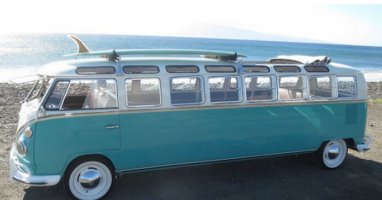It has served important roles in worship, it has been used for medicinal purposes, and it has been used for its pure ability to help people let loose and have a good time. Yes, alcohol tells us a fascinating story, that of the relationship between societies and alcohol, and how they have evolved together, through time...
Ancient Period
From what historians have gathered, alcohol was first used over ten thousand years ago. Though its exact use at the time is unknown, the discovery of beer jugs dating back to the late Stone Age provides evidence that fermented beverages have existed as early as the Neolithic period. It has even been suggested that beer may have preceded bread as a staple. Better than sliced bread? Guess so.
The Ancient Egyptians were master brewers and believed that alcoholic beverages were symbolic, necessary for the worshiping of Osiris, the Egyptians' god of wine, and also the inventor of beer. Both wine and beer were offered to gods and the Ancient Egyptians had over 17 varieties of beer and at least 24 varieties of wine.

In ancient Chinese societies, drinking was also used as a source of inspiration and worship, however, these societies demonstrate that excessive drinking and abuse did exist. There were laws that prohibited the making of wine, but these laws were just as quickly repealed as they were enacted.
The Ancient Greeks were among the most moderate drinkers of any ancient civilization and had many rules that stressed temperate drinking. Except of course the cult of Dinoysus-- who believed that being inebriated brought one closer to the deity; they weren't so temperate with the boozing, but that was because it was part of their religion. (Sign me up.)
The Roman Empire
Though Rome started off quite like the Ancient Greek civilization in its appreciation and respect for drinking in moderation, after the Roman conquest of the Mediterranean basin, all hell broke loose. "The traditional Roman values of temperance, frugality and simplicity were gradually replaced by heavy drinking, ambition, degeneracy and corruption." Wine was their poison and excessive drinking and getting debauched became acceptable and encouraged. Romans would indulge in practices such as drinking on an empty stomach to make the effects quicker, or making themselves throw-up to give themselves more room for food and wine.
First Drinking Games
The Romans loved drinking so much they were the first to come up with drinking games. One of them involved throwing a dice and having to rapidly consume as many cups as the number on the face of the dice rolled.
The Middle Ages and The Black Death
Throughout France, Spain and Italy in the Middle Ages, wine was the predominant alcoholic beverage and monasteries were the main producers. One of the most important developments to the uses of alcohol was the development of distillation. Monks were the first to experiment with this process and soon after physicians and alchemists, developed it is as a cure for ailments.

The Black Death began mid-fourteenth century, sweeping out 82% of the population. Subsequently, a lot of people began to seriously question their faith. Alcohol was used to try and escape thoughts of inevitable death but some also believed that drinking alcohol protected them from this mysterious disease. Alcohol consumption was high in this period.
The Modern Age
The Modern Age was characterized by large-scale changes: colonization, trade, the building of modern cities, rationality and science taking over as new ways of thinking.
In the sixteenth century, alcohol consumption was high, particularly the consumption of beer. Polish peasants consumed up to three liters of beer per day. English sailors received a ration of a gallon of beer per day and soldiers, two-thirds of a gallon. In Denmark, adult laborers and sailors would drink about a gallon of beer per day. Distilled alcohol and spirit drinking was mostly used for medicinal purposes at this time.

Sparkling champagne was introduced in the seventeenth century, developed primarily by Dom Perignon around 1668. He invented a cork that could contain bubbles, and stronger bottles that wouldn't burst. However it would take another century or so before fully mastering the technique to prevent bursting bottles, but once they had it figured out, sparkling champagne became very popular.
The eighteenth century was full of contradictions. Though society embraced "rational mastery of self", moderation and the negative effects of drunkenness, this period also reflected the emergence of a more self-indulgent society and the increase of spirit drinking. Spirits were made cheap and made readily available to the public, even though there was a negative stigma attached to drunkenness. The consumption of gin in 1685 was over one-half million gallons and only eleven years later in the London area alone, more than eleven million gallons of gin were produced. This, coupled with increasing poverty in London is said to have onset the so-called Gin-Epidemic.
In 1736, Parliament passed legislation to discourage consumption. However, seven years later, gin consumption reached its peak "when the nation of six and one-half million people drank over 18 million gallons of gin. And most was consumed by the small minority of the population then living in London and other cities; people in the countryside largely remained loyal to beer, ale and cider".
By the nineteenth century, the onset of the industrial revolution, alcohol consumption posed a direct threat to productivity and was blamed for social problems, poverty, increased crime rates, and moral and religious conflicts. The rapid growth and overcrowding of urban cities went overlooked as the major factor leading to these problems. Eventually groups were formed to try and abolish the distribution and consumption of alcohol.
Source: http://www2.potsdam.edu/hansondj/controversies/1114796842.html
The Prohibition

From 1913-1933 the sale, manufacture and transportation of alcohol for consumption was prohibited in the United States as mandated in the Eighteenth Amendment. The Ku Klux Klan strongly supported the cause, believing that it would help improve society. However, illegal distribution and production of liquor was rampant and prohibition became extremely unpopular during the Great Depression. By 1933, Franklin Roosevelt signed the Cullen-Harrison Act which allowed the manufacture and sale of certain alcohol beverages and by December 5, 1933 the Twenty-first Amendment repealed the Eighteenth Amendment.







